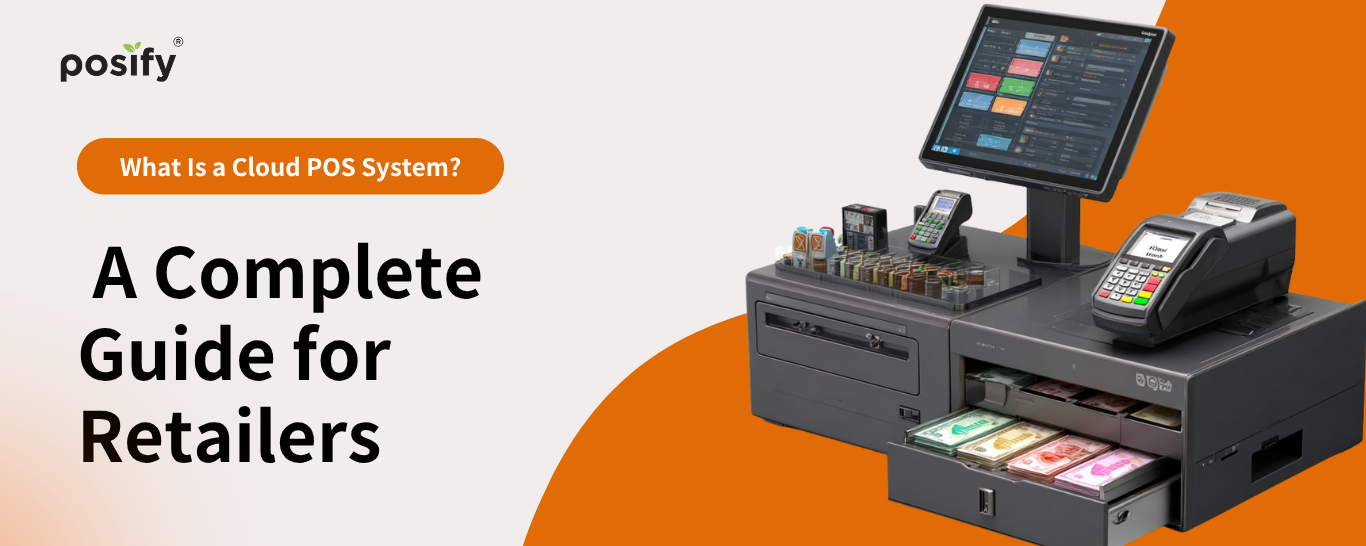
In today’s rapidly digitizing retail landscape, the cloud POS (Point of Sale) system has emerged as a critical digital foundation for modern store operations. While traditional POS systems have been in use for decades, they often fall short in meeting the evolving demands of modern consumers, omnichannel retail strategies, and data-driven decision-making. Cloud POS, on the other hand, offers a more flexible, real-time, and efficient solution that adapts to the needs of businesses both large and small. Whether you’re a local shop owner or managing a chain of retail locations, more and more merchants are turning to cloud POS systems to increase operational agility, enhance customer experiences, and gain deeper insights into their business performance.
So, what exactly is a cloud POS system? How is it different from a traditional POS? And what tangible benefits can it bring to your retail business beyond just processing sales? This article offers a comprehensive breakdown of how cloud POS works, its key features, real-world retail applications, and what to consider when choosing the right system for your business needs.
What Is a Cloud POS System? Understanding How It Works
A cloud POS (Point of Sale) system is a type of point-of-sale software that runs on the internet rather than relying on local servers or in-store hardware. Instead of storing data and functions on-site, all information is securely hosted on remote cloud servers. This setup allows users to access the system from anywhere, using a web browser, tablet, smartphone, or POS terminal — removing the limitations of specific devices or physical locations.
Cloud POS systems are typically delivered in a SaaS (Software as a Service) model. That means retailers don’t need to purchase expensive licenses or maintain their own servers. Instead, they subscribe to a monthly or annual plan, which includes regular updates, security patches, and technical support. This approach greatly reduces upfront costs, simplifies deployment, and allows seamless integration with other tools such as eCommerce platforms, inventory management systems, or customer relationship management (CRM) tools via API connections.
One of the most powerful features of a cloud POS is real-time data synchronization. Sales transactions, inventory levels, customer data, and other key business information across multiple store locations are updated instantly and centrally managed through the cloud dashboard. For businesses operating multiple branches or responding quickly to market changes, this offers a significant strategic advantage.
Traditional POS vs. Cloud POS: Key Differences
Traditional POS systems are typically installed on local computers or servers inside the physical store. All data is stored on-site, and both operations and updates rely heavily on local hardware. While this model was widely adopted in the past, it comes with significant limitations — such as the inability to sync data across multiple locations, manual system updates, risks of data loss due to hardware failure, and the lack of remote access to business insights.
Cloud POS systems overcome these barriers by storing all data securely in the cloud. This means that businesses can operate their POS across multiple devices and locations with real-time synchronization. This is especially valuable for growing retailers, chain stores, or businesses adopting an omnichannel strategy. Cloud systems are updated automatically by the provider, ensuring the software is always secure, compliant, and up-to-date — with no extra manual work or cost to the merchant.
From a security perspective, modern cloud POS platforms typically offer encrypted data transmission, automatic backups, and role-based access control, helping reduce the risk of data breaches or internal misuse. Operationally, cloud POS provides real-time access to sales data and inventory reports, enabling faster, more informed decisions that drive business growth.
In short, a traditional POS is like an “isolated island,” while a cloud POS is a flexible, connected, and scalable platform designed for today’s dynamic retail environment.
Chat with our expert team via WhatsApp today to learn more!

Key Features and Capabilities of Cloud POS
A cloud POS system is far more than just a digital cash register — it’s an intelligent operations platform that brings together sales processing, inventory tracking, customer relationship management, analytics, and marketing tools. For modern retailers, these features are no longer optional extras — they are essential for improving efficiency, competitiveness, and customer engagement.
1. Multi-Device & Cross-Platform Access
Cloud POS can be accessed via tablets, laptops, smartphones, or dedicated POS terminals. Whether you’re at the checkout counter, in the stockroom, or working remotely, you can monitor and manage your store in real time.
2. Real-Time Inventory and Multi-Location Sync
All transactions and inventory changes are automatically synced to the cloud. For businesses with multiple outlets or warehouses, this provides a centralized view of stock levels, item movements, and transfer records — helping reduce stockouts and discrepancies.
3. Built-In CRM (Customer Relationship Management)
Cloud POS systems often include CRM tools to capture customer purchase history, preferences, and visit frequency. This enables targeted marketing campaigns, personalized offers, loyalty rewards, and birthday promotions to drive repeat business and build stronger relationships.
4. Smart Reporting and Sales Analytics
With built-in dashboards and reporting tools, retailers can instantly view daily, weekly, monthly, or seasonal performance metrics — including best-selling products, peak hours, staff performance, and more. This empowers more accurate and data-driven decisions.
5. Seamless Integrations and API Flexibility
Leading cloud POS platforms offer open APIs for integration with eCommerce platforms, delivery services, digital payments, e-invoicing systems, or advertising tools — allowing retailers to build a customized digital ecosystem tailored to their business.
These capabilities make cloud POS systems far more than just a sales tool. They are the central nervous system of a modern retail operation — empowering smarter, faster, and more agile business strategies.
Real-World Applications of Cloud POS in Retail
The flexibility and scalability of cloud POS systems make them ideal for a wide variety of retail formats — from independent stores to nationwide chains. Here are some common scenarios where cloud POS proves its value in real-world operations:
1. Multi-Location Retail Chains
For retailers with multiple stores, cloud POS offers centralized control over sales, inventory, and customer data. Headquarters can monitor performance across all locations in real time and make data-informed decisions on promotions, restocking, and staffing — improving efficiency and market responsiveness.
2. Pop-Up Shops and Mobile Booths
Cloud POS works seamlessly on mobile devices, making it perfect for pop-ups, fairs, events, or temporary stalls. With just a tablet or smartphone and mobile internet, merchants can quickly set up a fully functional POS system and sync transactions back to the main dashboard for reporting and analysis.
3. Hybrid Business Models (Retail + Café, Showroom + Workshop)
Retailers are increasingly blending product sales with services like food, events, or education. Cloud POS can support mixed transactions, timed pricing, seat management, and customizable workflows — making it easy to operate in complex, hybrid business environments.
4. Omnichannel Retail (O2O Integration)
As more brands operate both physical stores and eCommerce sites, cloud POS serves as the bridge that connects them. With proper integrations, merchants can unify inventory, customer profiles, and promotions across all channels — enabling smooth experiences like online orders with in-store pickup, or scanning in-store QR codes to access exclusive online deals.
5. Data-Driven Customer Engagement
Using CRM and analytics tools built into cloud POS, businesses can track customer behavior and automate personalized marketing campaigns. From loyalty programs to retargeting efforts, decisions are guided by real-time data — helping improve repeat purchases and average order value.
These examples demonstrate that cloud POS is not just a tool for smoother transactions, but a platform for strategic growth and modern retail transformation.
Conclusion: How Cloud POS is Shaping the Future of Retail
As the retail industry evolves toward greater digitalization, real-time operations, and customer-centric experiences, cloud POS is no longer a “nice-to-have” — it’s a core infrastructure for modern retail success. It simplifies daily operations, enhances data-driven decision-making, and unlocks new opportunities for integrated marketing and omnichannel services.
In fast-paced, highly competitive environments, a flexible, scalable, and responsive POS system empowers retailers to adapt quickly, personalize the customer journey, and launch targeted campaigns with precision. It's not just a tool to cut costs — it's a strategic asset to drive revenue growth and increase customer loyalty.
The future of retail will revolve around smarter data integration, automation, and seamless omnichannel experiences. Implementing a cloud POS system is the first step toward that future. Choosing the right platform is more than a tech upgrade — it's an investment in your brand’s long-term innovation and competitiveness.







